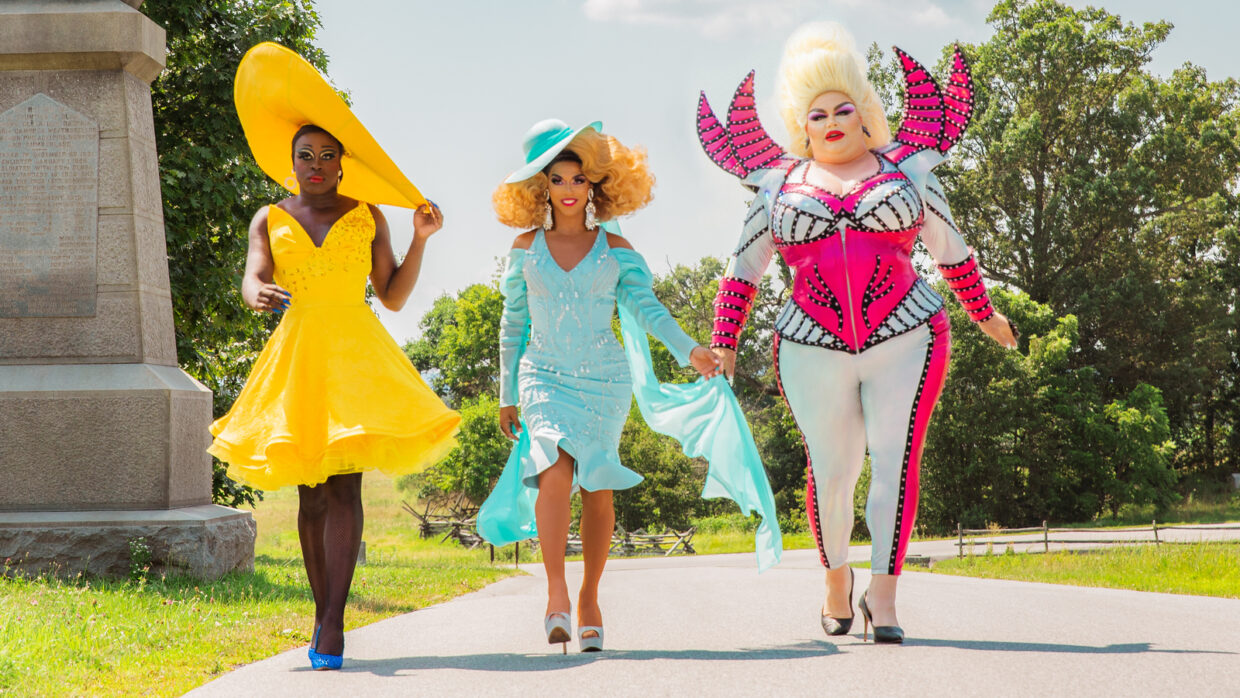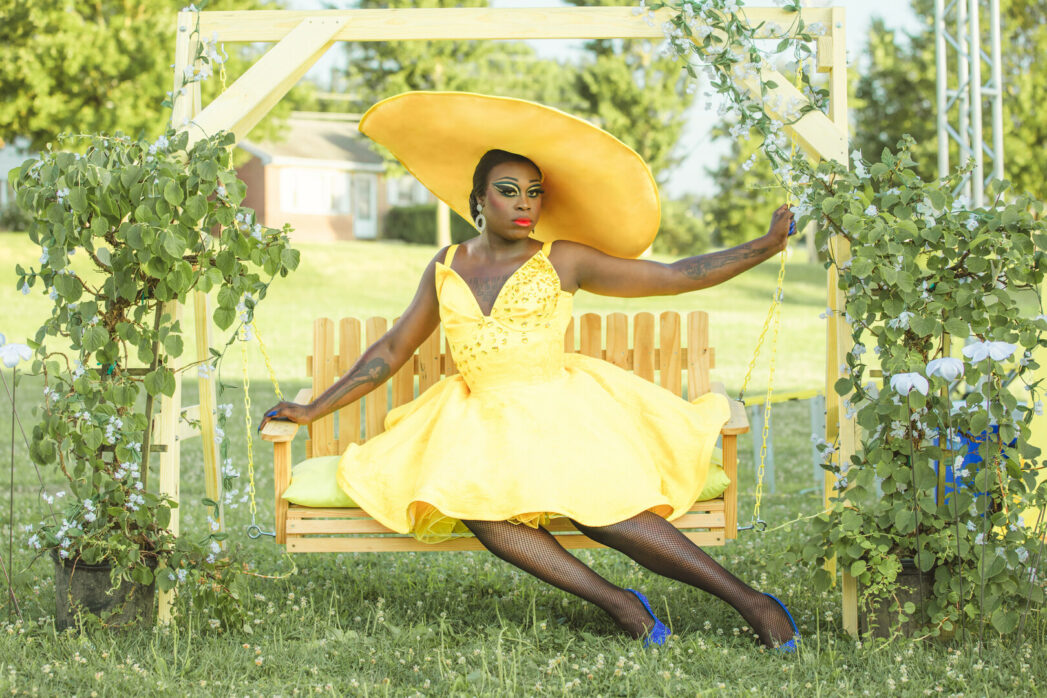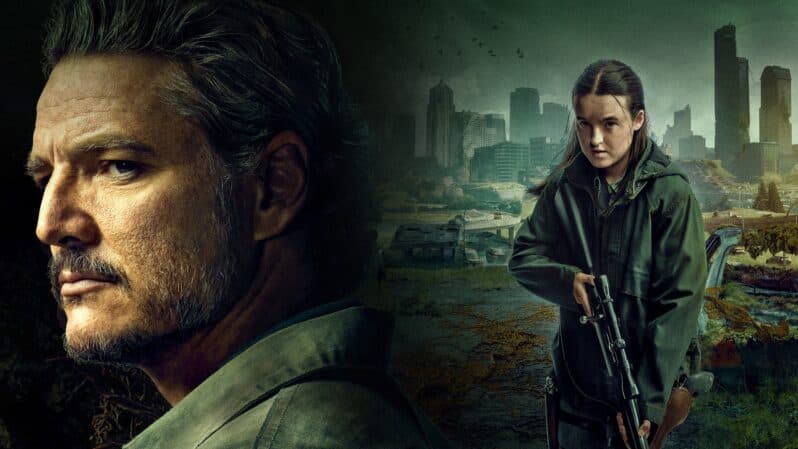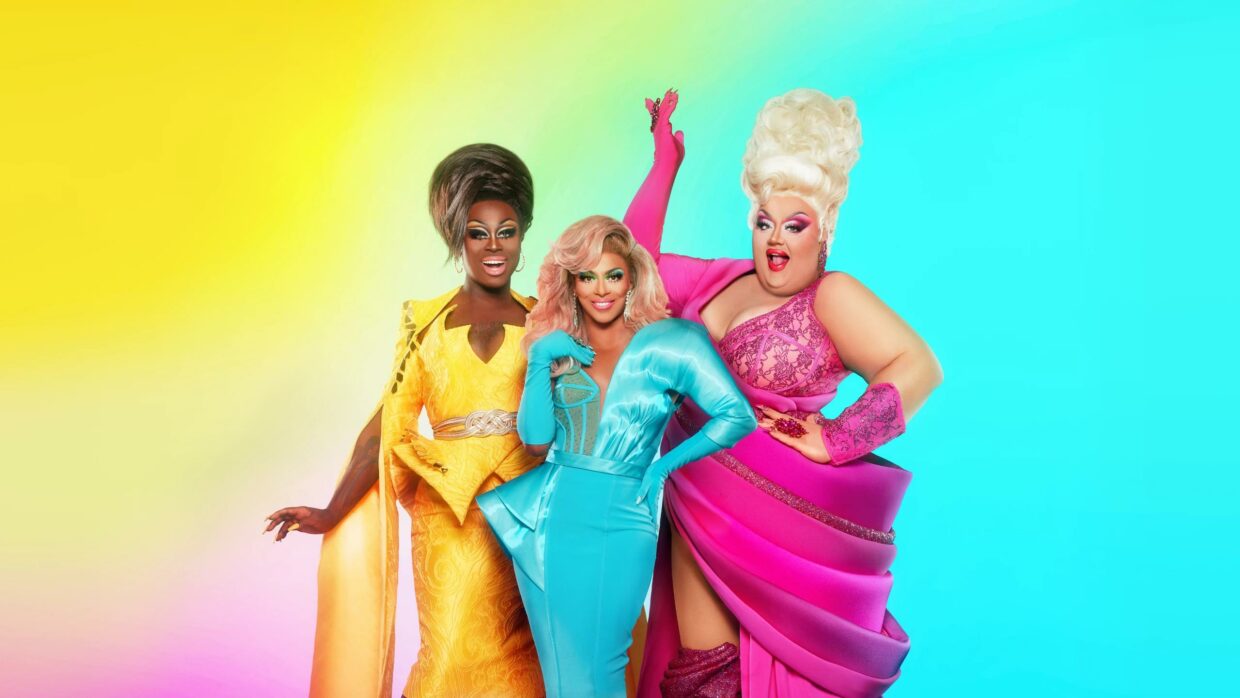By Bianca Coleman27 October 2022
We’re Here S1-4
There is nothing more powerful than becoming what you imagine, says Bob The Drag Queen. Bob is one of the three hosts of HBO’s We’re Here, along with Shangela and Eureka O’Hara. The title is the first part of the slogan – the rest being “We’re queer. Get used to it” – popularised by activist group Queer Nation in the 1990s.
The premise of this show (Seasons 1-4 are now streaming on Showmax) is that Bob, Shangela and Eureka roll into a small, mostly bigoted and prejudiced American far-right conservative town in their vehicles done up to look like larger-than-life things like a handbag and an elephant. I’m not entirely sure what the pink one is; you see more of these in the first season than the second.
The formula, and it’s a winning one, is this: the three queens arrive in themed, corresponding drag, so over the top as to be in the stratosphere. They sashay down the main road in impossible platform soles where everybody stares at them with a mixture of confusion and appreciation. No, they are not always well received, and that’s the underlying point; neither are the citizens who are different in any way. “Where the gays at?” asks Shangela.
They find them, of course, and each queen is assigned a drag daughter to their drag motherhood. There are gay men and women but also transgender folk, differently abled folk and neurodivergent folk who are gay (and some who are all of these). There are those who have been ostracised by their families, and those who for many years lived miserably in the closet, were bullied at school and called names, assaulted and bashed, and who contemplated suicide because they were so desperate, thinking there was no one else in the world like them. This is what LGBTQ people live with, every day. Pretty horrible, right? People really suck.
In We’re Here, drag is not only men in wigs, frocks and makeup; drag is a concept as fluid as gender and sexuality. It’s empowering for all.
A straight pastor (whose daughter is pansexual) takes on the challenge to further his message of love and tolerance that he preaches at his church – where is he is not permitted to officiate same-sex marriages.
In episode 3 of Season 2, Del Rio, Texas, we meet the gay mayor and he is fabulous; we see mothers who come out, so to speak, in support of their children, and those who have overcome homophobia; we see people who have been conditioned their whole lives to believe there is something wrong with them, that they are ugly, being encouraged and lifted up; we see a straight twin walk in his gay brother’s heels, to see what it’s like to be out of the heteronormative comfort zone.
Once we’ve met the characters, heard their stories and acknowledged how terrifying it is to expose this side of themselves, everyone meets up with the wardrobe, hair and makeup, and choreography team. Then it’s show day, the whole town is invited, and HBO’s big bucks are put to good use with extravagant outfits that glitter and shine. Eyebrows and beards are shaved off to create a blank canvas for the faces which are fully “dusted” – a drag term Bob explains in Season 2.
Each new drag child and their/her/his mother slays, then gets a chance to speak to the audience. It’s superb.

Bob, Eureka and Shangela are all previous RuPaul’s Drag Race contestants, with Bob having won Season 8. When you see Bob (either he/him or she/her pronouns) introduce him/herself as just Bob when in drag, the reactions are delicious. Like, what? Understand these are enclaves where parents want to shield their children from drag queens, and thereby deny them a true art form.
Eureka lived as a transgender woman for about five years before deciding to detransition. They now identify as “genderfluid and gender-neutral” and use they/them pronouns out of drag. Eureka supports body positivity and has nicknamed themself “The Elephant Queen”. Eureka stands 1.95m (6 foot 4) without heels and a towering wig.
Shangela is incredible for many reasons, including the fact she once broke her leg doing a dead/death drop, a mindblowing drag queen stunt. And she still does it! The drop, not the breaking, we hope. (See her do it here. Learn how to do it here. If you dare.)
No one could hope for better drag mothers, mothers who are kind, sensitive and caring, who nurture their children to be themselves and embrace their beauty and uniqueness – all while being utterly fabulous.
They cry, their protégés cry, we all cry. And then we laugh and leap for joy. A quote from the show: “Love has no gender, love has no race. It’s just…love”. As it should be. We’re Here Is crammed with positive messages for everyone, no matter their orientation.
“There’re a lot of people out there who see the beauty in you. But you have to see it too, you know?” says Eureka. “We’re just expressing this idea that no matter what people say it’s your choice to be who you are.”

Variety says: “What’s inspiring is that all the folks that are featured are so certain as to who they are – and despite facing homophobia, transphobia, racism and bigotry every day, they persist.”
That deserves respect.
Stream The L Word: Generation Q S1-2
Binge all seasons of The Bold Type
More HBO and Max shows to stream

Nikki Glaser: Someday You’ll Die
In her hilarious, unapologetic, and brutally honest style, Nikki Glaser tackles a wide range of taboo topics, including why she doesn’t want kids.

Bella Ramsey on Ellie’s new love interest in The Last of Us S2
Bella Ramsey talks about her award-winning role as Ellie in The Last of Us S2, and her new co-star, Isabela Merced. Catch new episodes every Monday.

10 things to know before watching The Last of Us Season 2
As the new season takes a five-year leap into the future, we recap what you need to know from The Last of Us Season 1, from a guide to the Infected, cults, militias and communities, to who still know about Ellie’s immunity.

The Last of Us S1-2
Joel and Ellie, a pair connected through the harshness of the world they live in, are forced to endure brutal circumstances and ruthless killers on a trek across post-pandemic America.


